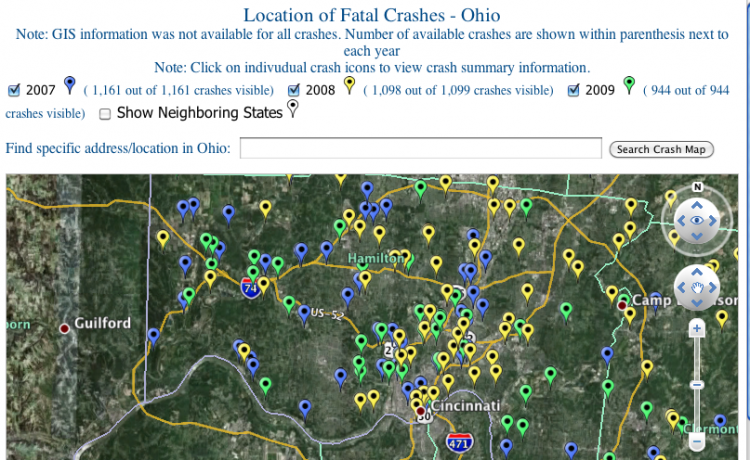I do a lot of research on bicycle crashes. WHY do they happen? Where do they happen. What happened in the crash. How did the police analyze the crash? Who was at fault? Why? What could have been done differently? What trends are appearing in crashes? How does this particular crash measure up against the mountain of “statistics” available? Are the statistics reliable?
Below are some of the websites I use in gathering numbers and data. PLEASE remember that any statistical report is governed by the GIGO theory – Garbage In/Garbage Out. In my experience, cyclists tend to be blamed more often than they should for causing crashes. This is sometimes due to quick, sloppy analysis at the street level by a traffic cop who may not fully understand the dynamics of riding a bike in traffic. Of course, cyclists [and motorists] continue to do dumb, careless things while riding in traffic, which lead to crashes.
A cyclist loses EVERY battle with cager – a 2 ton hunk of steel in the hands of a careless, distracted motorist is a more dangerous device in traffic than a drunk with a loaded pistol. The car is more likely to, and DOES in fact, cause serious damage and cause injury and death to others.
Steve Magas

GENERAL CRASH WEBSITES
This takes some toggling and playing to figure it out – THANKS to Barry Childress for this one!
Ken Kifer Article –
STATISTICS
Each state keeps crash statistics. Ohio publishes its “Crash Facts” each year, with a few pages devoted to cycling statistics. The IIHS, Insurance Institute for Highway Safety, also publishes statistics on a national level, as does NHTSA, the National Highway Transportation Safety Administration.
While the numbers are similar the “themes” of each group are not. The IIHS is funded 100% by insurance companies and it uses the numbers to promote insurance-related themes – helmet laws for bicycles and motorcycles, for example. IIHS feels helmet laws will decrease injuries and therefor decrease the amount of money its supporters have to pay out thereby increasing insurance company profits. IIHS doesn’t care if helmet laws reduce the number of people who will ride, or will result in people being issued tickets for not having state sponsored headgear. IIHS cares about insurance company profits. So, the numbers are there, but please read between the lines on the “Op-Ed” portion of these pages.
OHIO
IIHS – Insurance Institute of Highway Safety
HISTORICAL
The issues cyclists face today are nothing new. In the late 1800’s, yes friends he said EIGHTEEN hundreds, cyclists were under fire for “scorching.” [Pardon the pun]. Scorchers were fast moving cyclists who rode willy nilly through pedestrians and horse drawn carts on what passed for the roads and sidewalks of the late 19th century. None other than Teddy Roosevelt organized a police group with the purpose of ticketing scorchers!
In addition, during the late 1800’s the League of American Wheelmen was formed. The group took a very active role in promoting cycling, promoting the development of paved roads during “The Good Roads Movement” and promoting politicians who believed in their vision. The LAW and cycling in general was prominently featured in several regular New York Times articles and columns, a couple of which are listed below. These provide a fascinating look into the past, while confirming once again that history not only repeats itself, it does so in a most aggressive fashion!
https://ohiobikelawyer.com/bike-crash-research-the-numbers/ .
© 2025.


Fatality Analysis Reporting System is my favorite, it has a query tab (takes a bit of work to figure out the bike end of it though.) Under the States tab you can double click to get detail by county in your State.
Examples:
2009 Pedestrian Fatality Rate by County
2009 Bike/ped fatalities by county
Thanks Barry. I updated with FARS. Great stuff!
Interestingly, Barry and I had a brief exchange on a related topic.
I’m a believer in evaluating theories through data. But with cycling we need to be careful to recognize that the data itself often fails to identify an effect. While we can interpret the data through a model and come to certain conclusions, a lot of the information is actually imposed via the model.
Toronto cyclist accident dynamic map:
http://www.theglobeandmail.com/news/national/toronto/article2316875.ece
Also has links to raw data in spreadsheet form
tOM